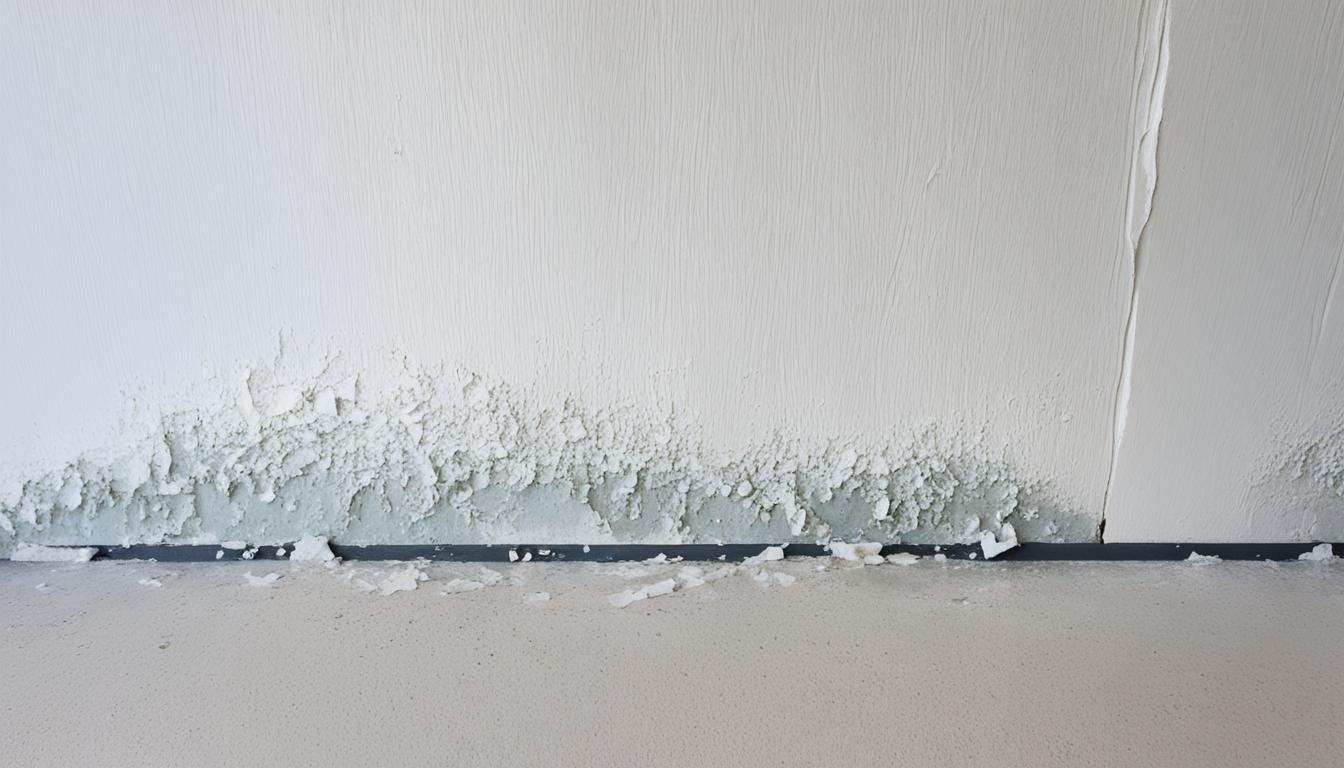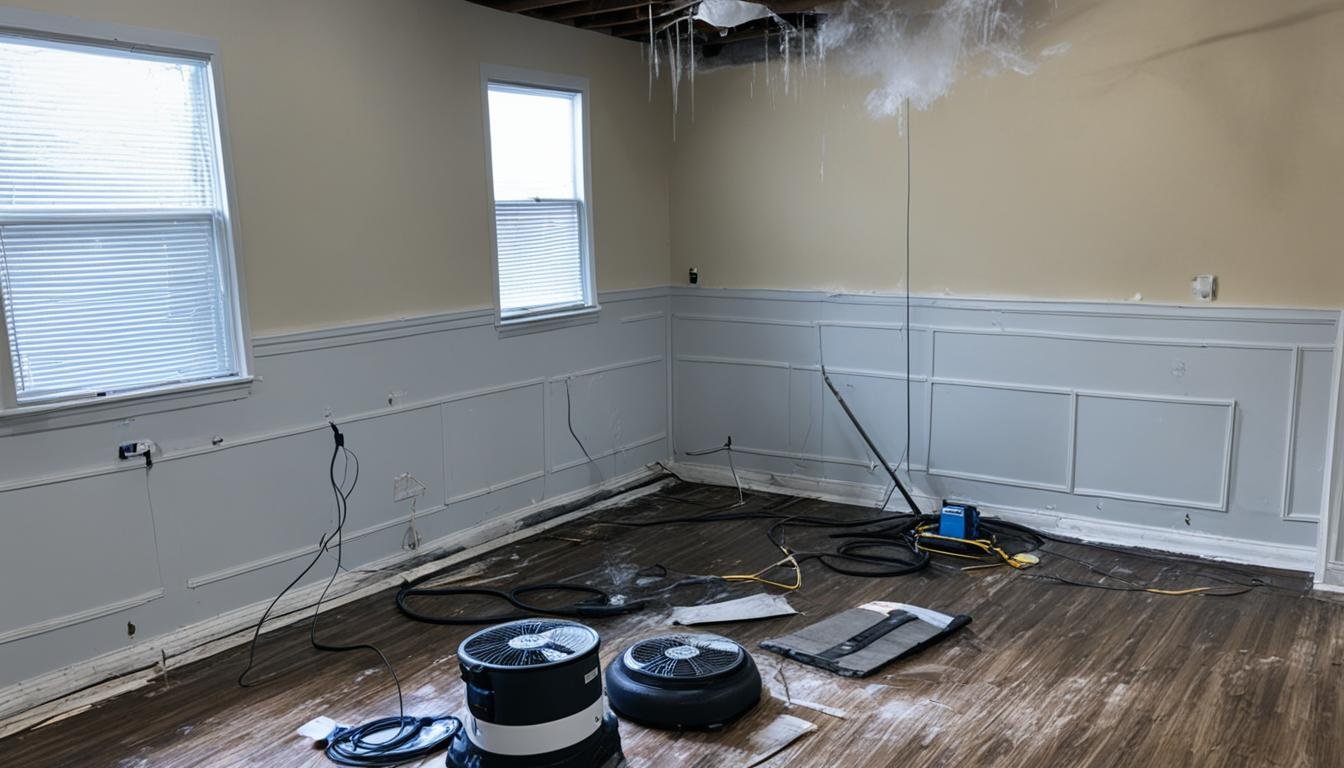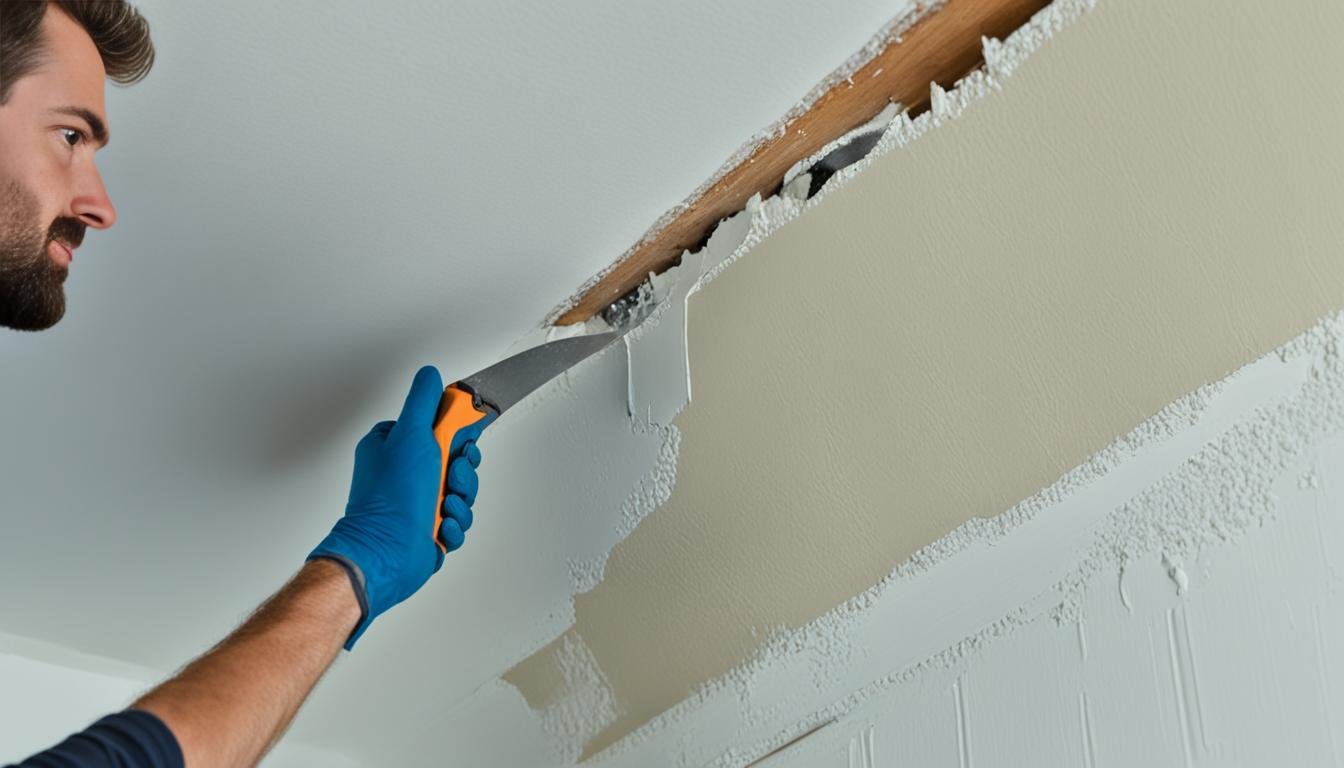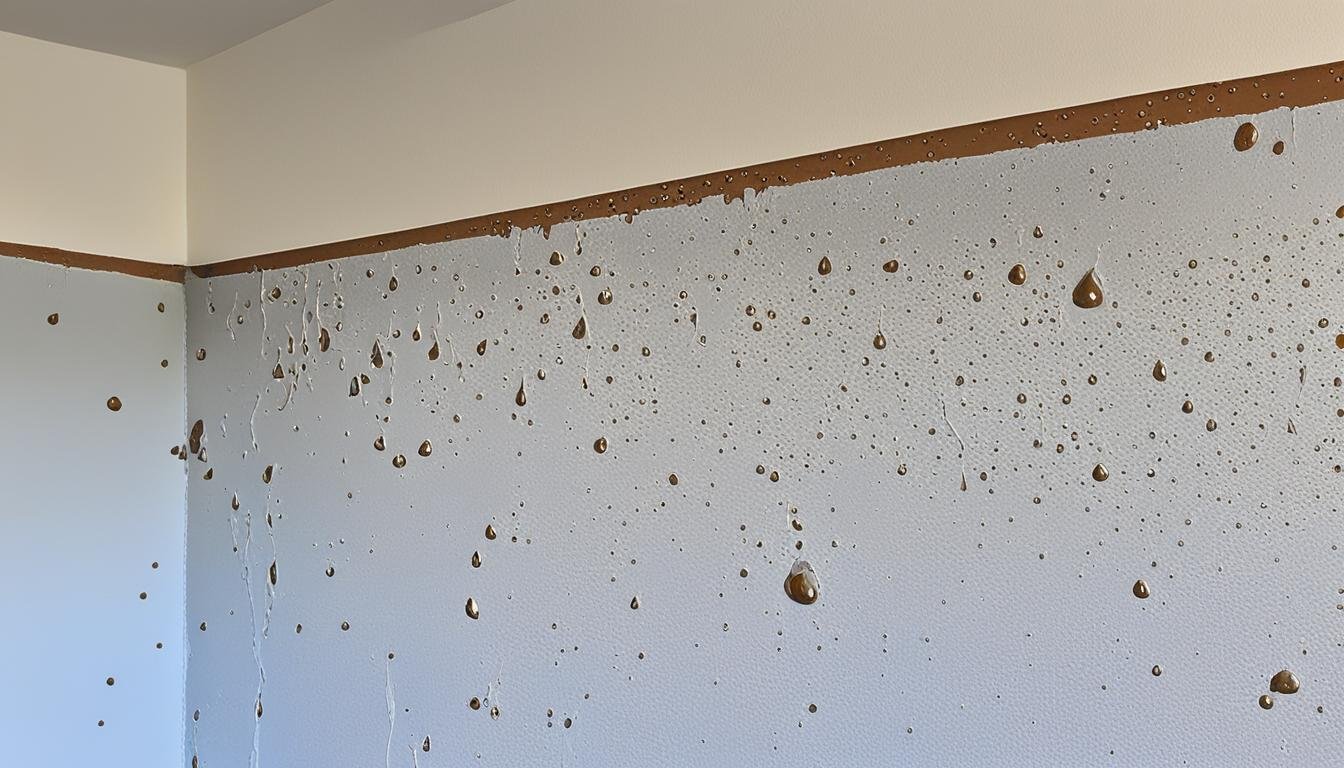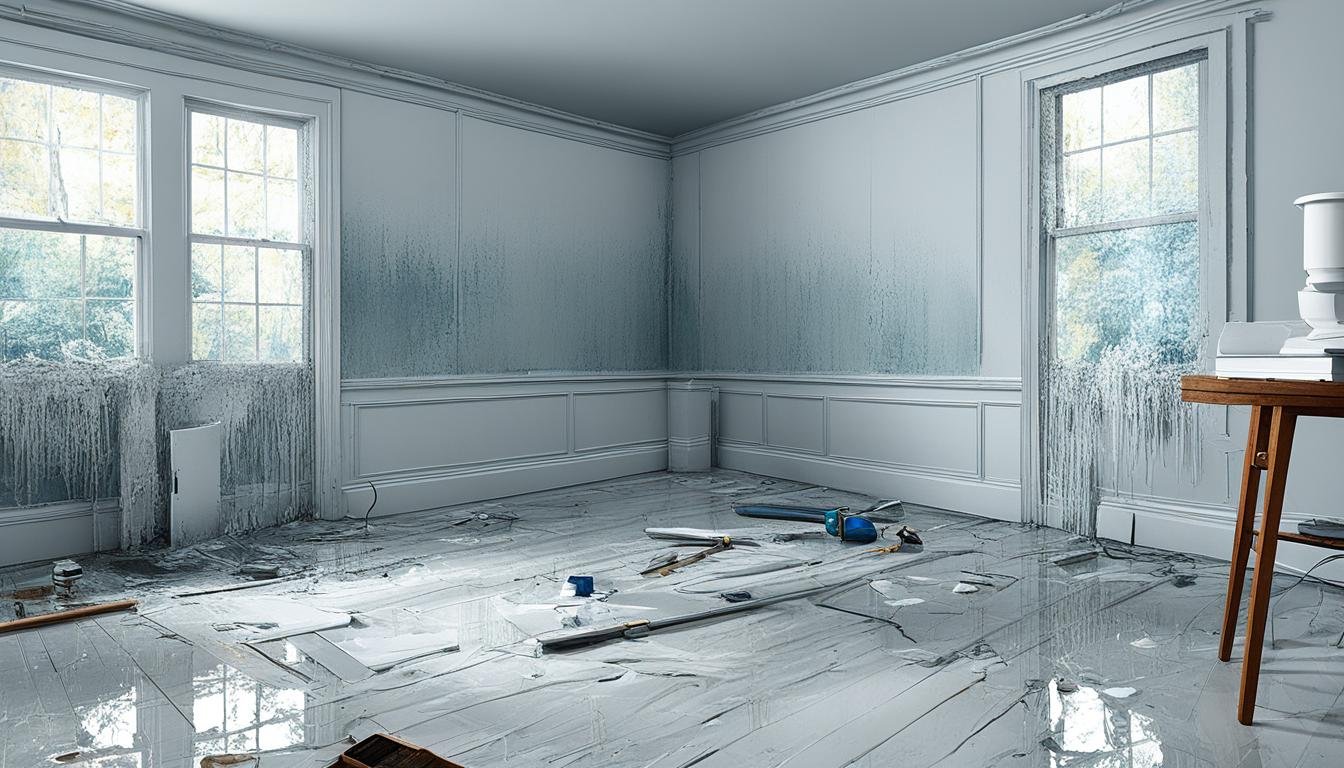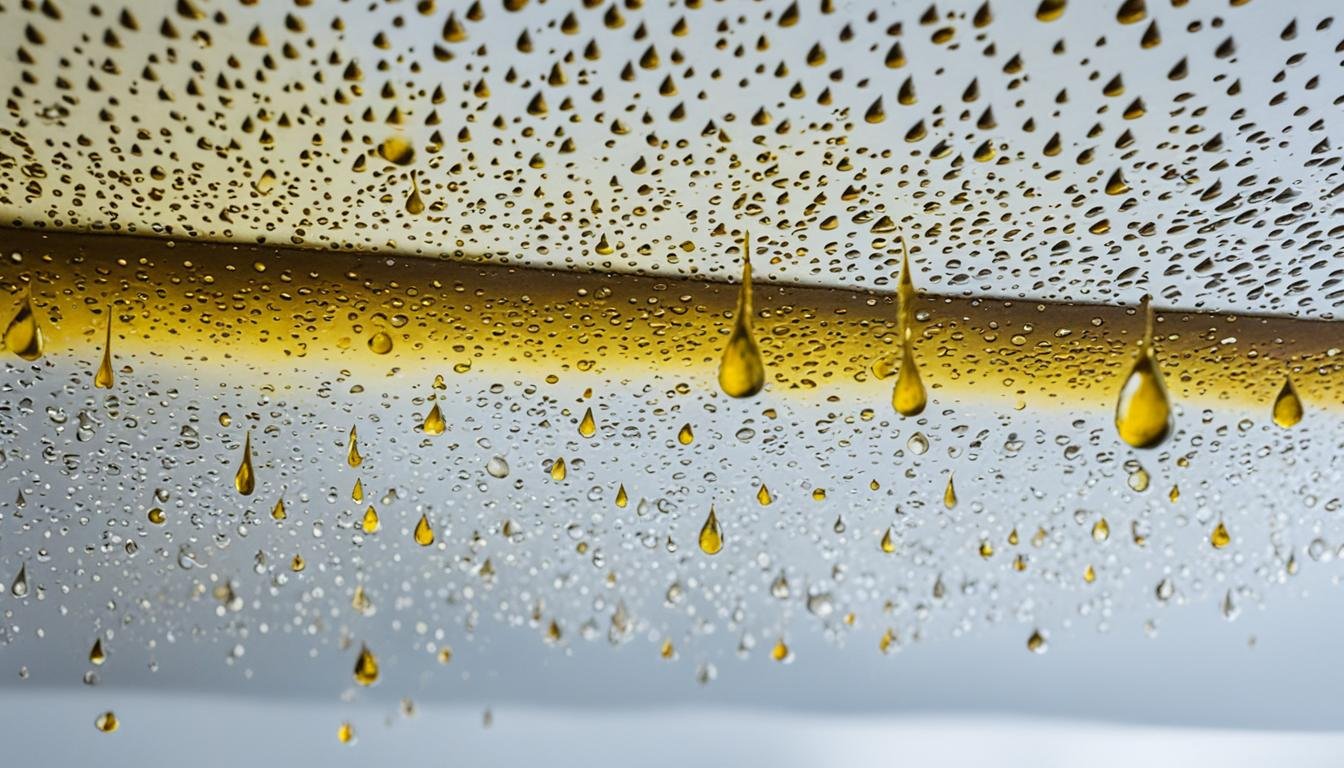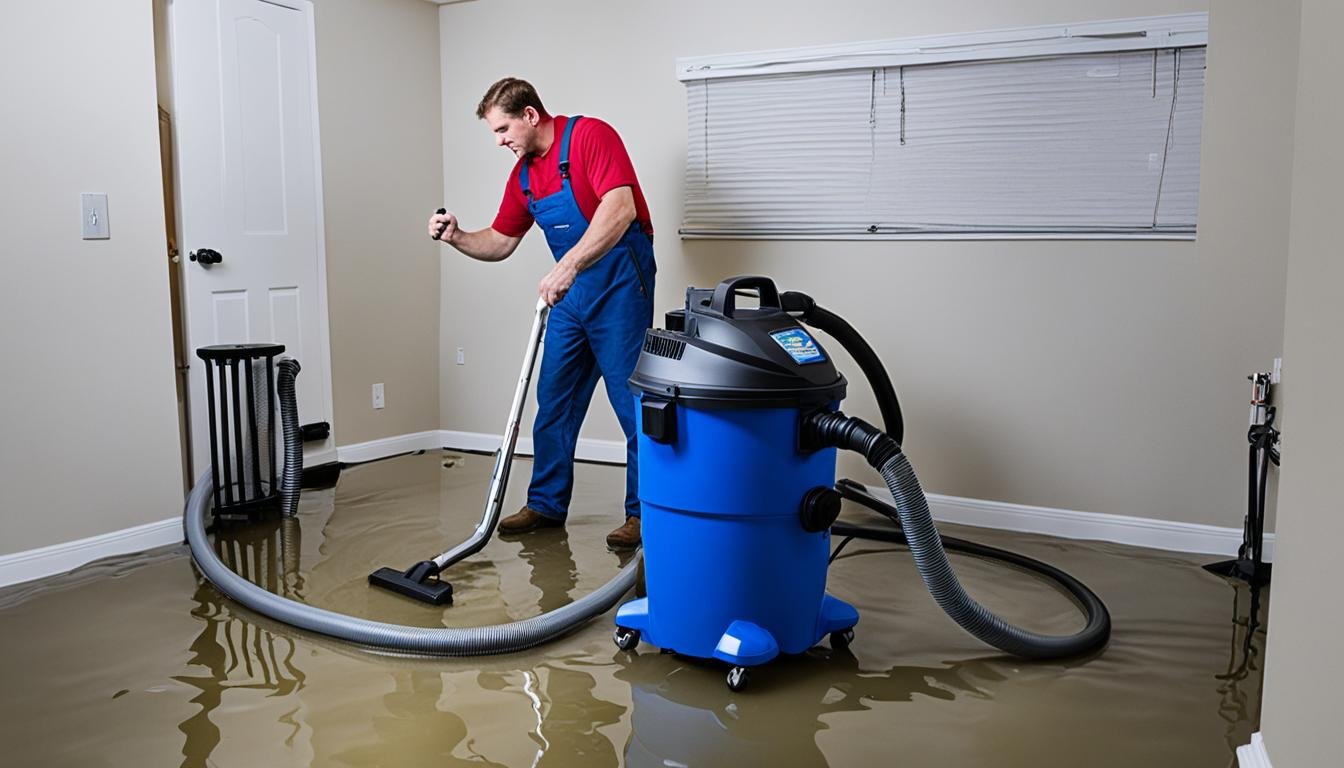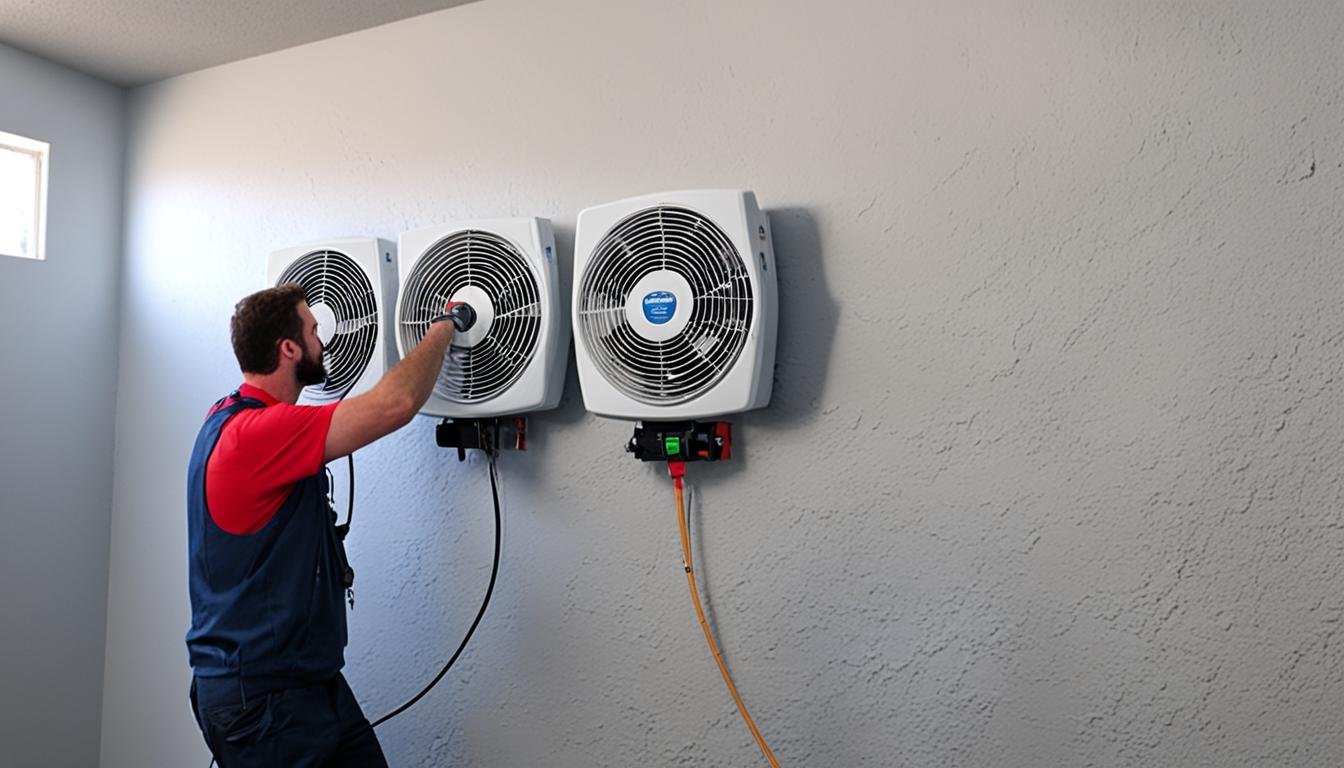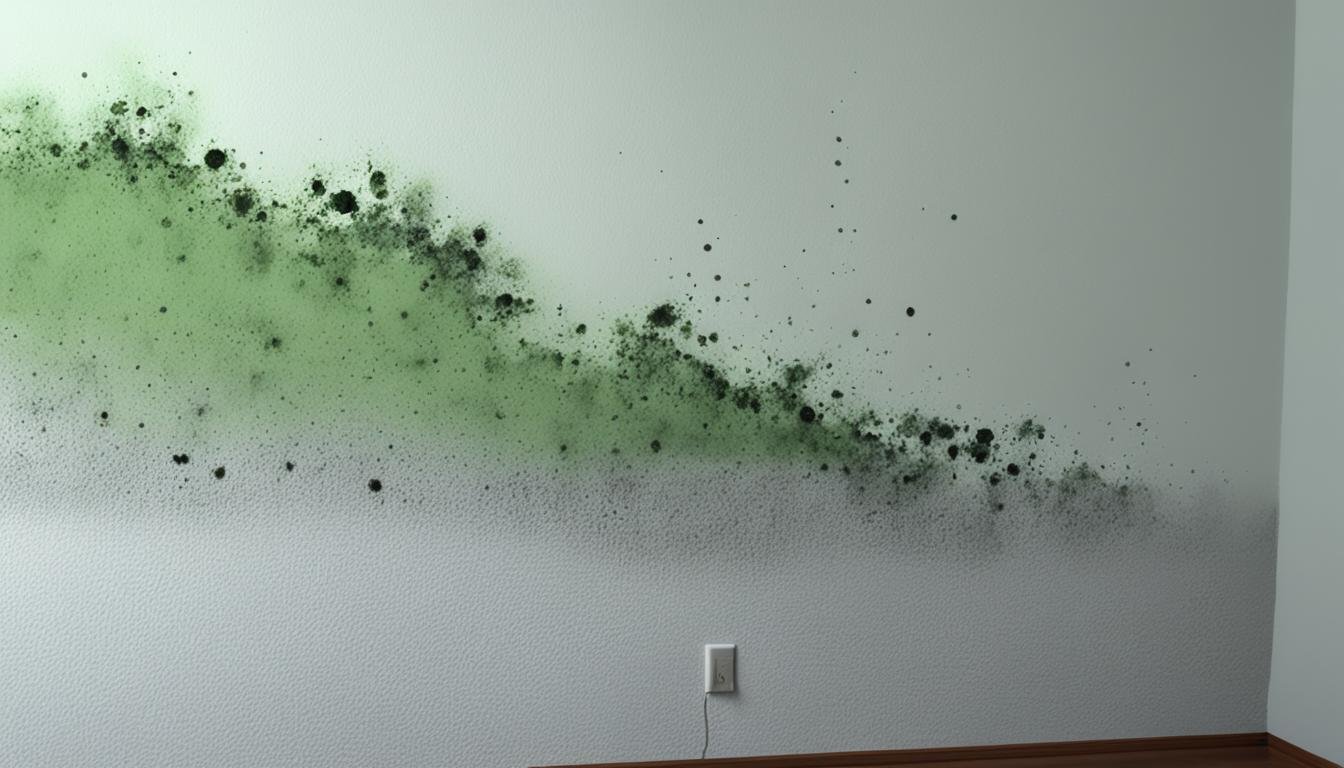Mold Growth Timeline After Water Damage
Mold can start growing within 24 to 48 hours in a home after water damage. This quick onset shows why it’s crucial to deal with water problems fast. If a flood or leak isn’t handled promptly, mold can take over and be harmful to your health. Water damage, from a flood, leak, or high humidity, creates the perfect environment for mold. It allows mold spores to quickly grow and spread in your home. As such, tackling leaks and floods without delay is essential to prevent mold issues. Key Takeaways Mold can begin growing in as little as 24-48 hours after water damage occurs. Mold spreads quickly through airborne spores, making prompt action critical. Mold requires moisture, food sources, and darkness to thrive, so addressing water damage is key. Common signs of mold include musty odors, discoloration, and visible growth. Hiring professional water damage restoration experts can help prevent major mold problems. Understanding the Rapid Progression of Mold Growth Mold spores are everywhere, landing on surfaces and waiting to grow. They quickly become mold when they get moist. Water is key for mold to spread. This can come from floods, high humidity, or small leaks. Mold can grow fast, covering new areas within days. How quickly it spreads varies. It depends on temperature, air flow, and the materials it’s on. Factors Contributing to Mold Growth Things like wood, drywall, and carpet are perfect for mold to grow on. Mold loves temperatures between 77 and 86 degrees. If a space isn’t well-ventilated, moisture and mold can spread fast. It’s crucial to dry out wet areas quickly after a leak or flood. Mold starts growing within 24-48 hours after water damage. Act fast to avoid big mold problems. Ignoring moisture can lead to serious mold that needs professional help to fix. “Mold spores can start growing within 24 to 48 hours after a flash flood.” To stop mold, it’s vital to control moisture, keep the right temperatures, and ensure good air flow. This helps lower the mold risk and keeps your space healthy. Mold Growth Timeline After Water Damage Water damage in your home can quickly lead to mold growth. The Environmental Protection Agency (EPA) states that mold often starts within 24 to 48 hours of the damage. It depends on the temperature, how humid it is, the materials present, and how much damage occurred. Mold spores can grow into visible mold on surfaces within a day. If not dealt with, this takes about 18 to 21 days. It’s vital to act fast by getting professional help. A company like Water Damage Pros – San Bernardino (951-903-5429) can dry the place to stop mold from spreading. Timeline Mold Growth Progression 24-48 hours Mold can start growing 18-21 days Mold becomes visible if left unaddressed 2 weeks to 1 month Mold can spread extensively throughout the affected area Mold speed depends on many things, like: Temperature: Mold likes warmth and grows fast in the right heat. Moisture levels: More moisture means better conditions for mold. Organic materials: Mold spreads more on things like wood, paper, or cloth. Acting fast after water damage, keeping things dry, ventilating well, and drying thoroughly are key to preventing mold. This helps protect your house and health. “Mold can grow significantly within 24 to 48 hours after water damage, making prompt action crucial to prevent its rapid spread.” Signs of Mold Growth and Health Risks Finding mold after water damage is concerning. Knowing the signs of mold and the health risks is key. Early recognition lets you act fast to protect your home and health. A musty smell is a common sign of mold. If your home smells damp or earthy, mold might be growing. You might also see stains or greenish-black, white, or orange patches. Mold can cause health problems, especially for those with breathing issues. Symptoms include sneezing, coughing, and eye irritations. For some, it can lead to serious infections or problems with the nervous system. Dealing with mold quickly is vital for good air and health. If you think there’s mold, get a pro to check and fix it. Good ventilation and keeping things dry can stop mold and keep your home safe. Signs of Mold Growth Mold Health Risks Musty odor Visible discoloration or patches of mold Water stains or moisture on surfaces Sneezing, coughing, eye irritation Difficulty breathing, especially for those with asthma Respiratory infections Neurological effects Getting rid of mold fast helps keep your home safe. Recognizing mold signs and health risks is crucial. This way, you can protect your family by taking the right steps early. “Mold can start growing within 24 to 48 hours after water damage, and if left unchecked, it can spread rapidly and lead to severe infestations within a few weeks.” Conclusion Mold can grow very quickly after water damage. It can start within 24 to 48 hours. This can harm your home and the people living in it. To stop major mold problems, dry out wet areas fast. Hiring Water Damage Pros is a smart choice for quick, efficient help. If you think there’s water damage, act fast. Mold spreads fast and can create big issues. Regular checks by trained people can stop mold and keep your home safe. Fast action is key to stop mold after a leak. It starts to grow in 24-48 hours under the right conditions. Knowing how fast mold can grow and acting quickly can save your home and health. Water Damage Pros in San Bernardino provides round-the-clock expert help. They tailor their services to fit your needs for quick and effective care against water and mold issues. FAQ How quickly can mold start growing after water damage? The EPA says mold can start growing in just 24 to 48 hours after water damage or a flood. This is if the conditions are right. What factors contribute to the rapid growth of mold? Things like mold spores, lots of moisture, warm places, and materials such as wood help mold grow fast. …


